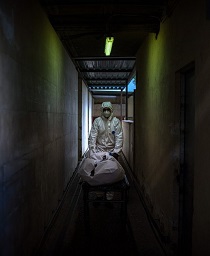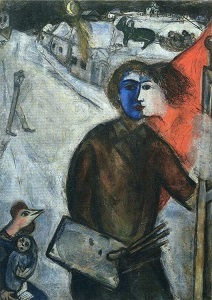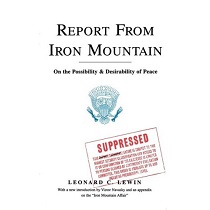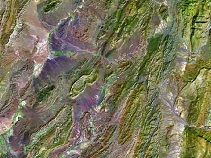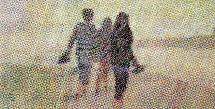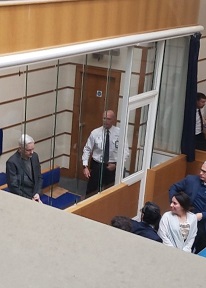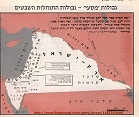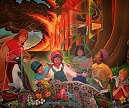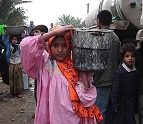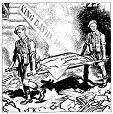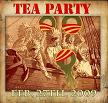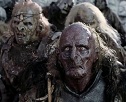The Ancient Art of Arkhelogy: The Importance of the Core Self and Core Writing
[Note: This is the seventh part in a seven-part series.]
PART SEVEN: An Arkhelogy Program for International Schools
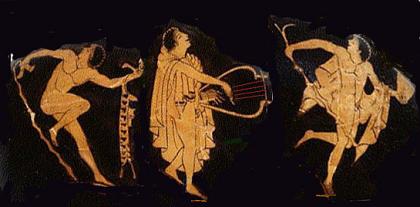
It should be evident from our earlier discussion that the UNIS and IB subjects, while comprehensive -- and while they touch upon a number of areas that relate to archetypes work – do not include any unit or program such as an Arkhelogy course or program.
It might be useful to note at this juncture that a single Arkhelogy course would be grossly insufficient to teach Arkhelogy at a usable level. A genuine Arkhelogy program will ensure full acquisition of the discipline and mastery of the skill. As a drama or dance program necessarily requires years to properly train student, as a law program takes a minimum of three years of hard study to teach the law student to “think like a lawyer,” so too does Arkhelogy require several years to master.
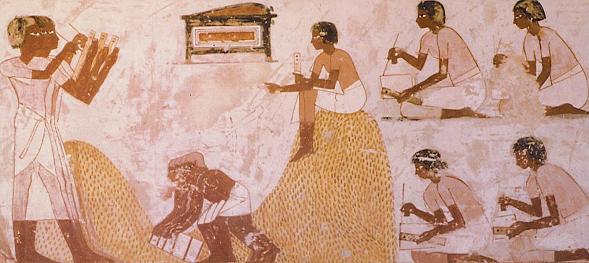
However, an Arkhelogy program would be simple to adopt and incorporate into an international high school program – or even into a middle school program, and it may even be begun at the grade school level. Such a program would begin with classes in which the component skills are introduced through the basic exercises. These classes can be taught like most knowledge-based classes that teach practical knowledge and skills. Exercises are given out each week, students do the exercises either in class or at home, share them with each other, and turn them into the teacher for comment. The teacher reads, assesses, and comments, returns the work, and engages students in class discussions about the exercises. The assessment addresses only understanding and use of each exercise and skill and students are requested to make no comments or critiques beyond the immediate application of the exercise.
The work changes seven-to-eight weeks into the semester when students get to isotypes - archetypes work. Students are then given “field research assignments” to gather isotype examples, reassemble periodically in class, and perhaps discuss their isotypes in small groups with teacher guidance. At some point during isotypes work, students begin to work privately with their teacher-guide and/or in small groups. Private work does not eliminate the usefulness of group or class work, but it is necessary for the teacher to be available for weekly one-hour sessions with each student and for daily short consultations.
These beginning/introductory classes can be taught in one semester, but they must be immediately followed by intermediate classes, where students begin to learn how to apply the mechanical skills they learned in the beginning class. These classes may evolve into one-on-one sessions, workshops, or discussion groups. Students should be allowed to engage in and actively pursue Arkhelogy work in all ways possible within the context of the school's duties.
Arkhelogy teachers, however, should be permitted to encourage students to use content from other classes and from their personal lives in their Arkhelogy work. This may mean using such content quite differently than it was originally intended to be used. Students will still be expected to comply with the curricula set forth in their other classes, but may incorporate that learning into the Arkhelogy class.
Teacher Training
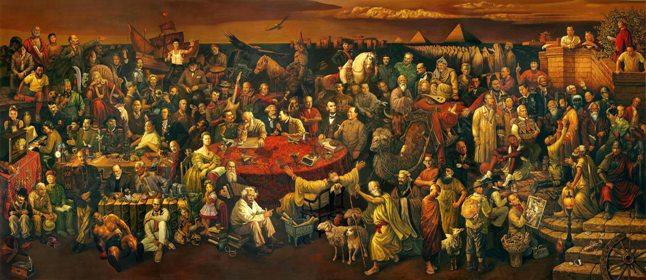
The greater amount of time and expense of the program development would necessarily be in training Arkhelogy teachers, which could only occur through work at a separate, central Archetypes Training Program or Institute. Such a training program does not yet exist, but could be developed by an individual international school or through multiple schools in collaboration.
Publication
It may be a good idea for students to publish work that is “at the archetypes level” at the end of a semester or academic year, as long as it is understood to be Arkhelogy work and not writing for purpose of publication under any other regime or for any other purpose.

Ancient Philosophers' Graffiti -”This is the Stella Forest in 7-Star Park, Guilin, China. It is a karst cavern that has been
the stopping place for Chinese philosophers, poets, literati, and artists for more than a thousand years. They left their
poems, paintings, prose, and graffiti carved into the limestone.” (Photo: Mike Cline, © 2003.)
Conclusion
Arkhelogy provides a critical missing link. This series can only graze the surface of the skill and practice of Arkhelogy. I have witnessed the truth and tremendous power of this method, with both myself and others. I have witnessed its power not only on the personal level but in the global arena. If we do not reconnect to our Core Selves, and, through that connection, to something greater than ourselves -- to the Great Spirit, God, the Cosmic Consciousness, Gaia, Allah -- , and back again to our physical and practical connection to the Earth, to halting mass use of resources and re-establishing sustainable living on this planet, our species, indeed life itself on Earth, will not likely survive.
Arkhelogy supplies an approach, a way, a method, a technique, to start this reconnecting process. It is crucial that we start now.
The Nature of the Jungian Archetype

Each archetype is capable of endless development and differentiation. It is therefore possible for it to be either more or less developed. In an outward form of religion where all the emphasis is placed on the superficial figure (that is, where we are dealing with a more or less complete projection) the archetype is identical with externalized ideas but remains unconscious as a psychic factor. When an unconscious content is replaced by a projected image to that extent, it is cut off from all participation in an influence on the conscious mind. Hence it largely forfeits its own life, because it is prevented from exerting a formative influence on the consciousness which is natural to it; what is more, it remains in its original form — unchanged, for nothing changes in the unconscious.Jeder Archetypus ist unendlicher Entwicklung und Differenzierung fähig. Es ist daher möglich, daß er mehr oder weniger entwickelt ist. In einer äußerlichen Religionsform, wo aller Nachdruck auf der äußeren Figur liegt (wo es sich also um eine mehr oder weniger vollständige Projektion handelt), ist der Archetypus identisch mit äußeren Vorstellungen, bleibt aber als seelischer Faktor unbewußt. Wenn ein unbewußter Inhalt durch ein Projektionsbild dermaßen ersetzt ist, so wird er vom Mitleben im und Einflußnehmen auf das Bewußtsein ausgeschlossen. Damit büßt er sein Leben weitgehend ein, weil er an der ihm natürlichen Gestaltung des Bewußtseins verhindert ist; ja mehr noch: er verbleibt unverändert in seiner ursprünglichen Form, denn im Unbewußten verändert sich nichts. Harper's Magazine, December 26, 2007
–Carl Gustav Jung, Psychologie und Alchemie (1935-36) in: Gesammelte Werke, vol. 12, p. 25 (1972)(S.H. transl.)
___________________________________________________________________________________
PART ONE: Arkhelogy: A Gateway to the Self
PART TWO: The Archetypal – The Eternal & Eye of the Soul
PART THREE: Some Principles of the Ancient Art of Arkhelogy
PART FOUR: The Arkhelogy Program
PART X: The Arkhelogy Skill: Lost in Time
PART SIX: International High School Writing Programs
___________________________________________________________________________________

Jennifer Van Bergen is an author, educator, and environmentalist currently living in Gainesville, Florida, where she teaches English and Law at Sante Fe College. Van Bergen is a former faculty member of the New School University in NYC, where she taught a course in the Writing Program that she eventually developed into her book Archetypes for Writers: Using the Power of Your Subconscious. Van Bergen is also the author of The Twilight of Democracy: The Bush Plan for America. She has also published several scholarly law articles, including one on the 1801 electoral tie between Thomas Jefferson and Aaron Burr, here. [ jennifer.vanbergen@gmail.com ]
___________________________________________________________________________________
References
Adler-Kassner, L. & Estrem, H. (2007). Reading practices in the writing classroom. Council of Writing Program Administrators. WPA: Writing Program Administration, 31(1-2), 35-47, Fall/Winter 2007.
The Association of Writers & Writing Programs. (2008). AWP drector's handbook: Guidelines, policies, and information for creative writing programs.
http://guide.awpwriter.org/hallmarks/DirectorsHandbook2008.pdf
Browning, E.B. Aurora Leigh.
Curtiss, M., transl. (2006). Letters of Marcel Proust. New York, NY: Turtle Point Press.
Goodman, F.D. (1988). How about demons? Possession and exorcism in the modern world. Indianapolis, IN: Indiana University Press.
Hancock, P. (2008). Novel thinking. The Times Higher Education Supplement, No.1853, 38.
International Baccalaureate Organization (IBO). (2009a). Diploma programme curriculum. Retrieved March 23, 2009 from http://www.ibo.org/diploma/curriculum/.
International Baccalaureate Organization (IBO). (2009a1). Diploma programme curriculum: Core requirements. Retrieved March 23, 2009 from http://www.ibo.org/diploma/curriculum/core/.
International Baccalaureate Organization (IBO). (2009a2). Diploma programme curriculum. Group 1: language A1. Retrieved March 23, 2009 from http://www.ibo.org/diploma/curriculum/group1/.
International Baccalaureate Organization (IBO). (2009a3). Diploma programme curriculum. Group 3: Individuals and societies. Retrieved March 23, 2009 from http://www.ibo.org/diploma/curriculum/group3/index.cfm.
International Baccalaureate Organization (IBO). (2009a4). Diploma programme curriculum. Group 6: the arts. Retrieved March 23, 2009 from http://www.ibo.org/diploma/curriculum/group6/.
International Baccalaureate Organization (IBO). (2009b). What is the diploma programme? Retrieved March 23, 2009 from http://www.ibo.org/diploma/.
International Baccalaureate Organization (IBO). (2009a). Diploma programme curriculum. Retrieved March 23, 2009 from
Lawlor, R. (1982, 2000). Sacred geometry: Philosophy and practice. London: Thames & Hudson.
Moskovitz, C. & Petit, M. (2007). Insiders and outsiders: Redrawing the boundaries of the writing program. reading practices in the writing classroom. Council of Writing Program Administrators. WPA: Writing Program Administration, 31(1-2), 86-103, Fall/Winter 2007.
National Council of Teachers of English (NCTE). (2008). NCTE / IRA Standards for the English Language Arts. Retrieved January 27, 2009 from http://www.ncte.org/standards.
Plato. (n.d.). Republic. Quoted by Theon of Smyrna (2nd c. AD) in Mathematics useful for understanding Plato, quoted in Lawlor (1982).
Proust, M. (1971). The Past Recaptured. (A. Major, Trans.) New York: Vintage Books.
Van Bergen, J. (2007). Archetypes for writers: Using the power of your subconscious. Studio City, CA: Michael Wiese Productions.
United Nations International School (UNIS). 2008. Curriculum: Art. Retrieved March 22, 2009 from http://www.unis.org/academic_programs/curriculum/art/index.aspx.
United Nations International School (UNIS). 2008. Curriculum: English. Retrieved March 22, 2009 from http://www.unis.org/academic_programs/curriculum/english/index.aspx.
United Nations International School (UNIS). 2008. Curriculum: Music. Retrieved March 22, 2009 from http://www.unis.org/academic_programs/curriculum/music/index.aspx.
United Nations International School (UNIS). 2008. Mission and guiding principles. Retrieved March 22, 2009 from http://www.unis.org/about_unis/mission__guiding_principles/index.aspx.
Wiehardt, G. (n.d.). Choosing a creative writing program. Retrieved January 20, 2009 from http://fictionwriting.about.com/od/shortstorywriting/a/MFA.htm.
Williams, J.M. & McEnerney, L. (1995). Writing in college: A short guide to college writing. University of Chicago. Retrieved January 20, 2009 from http://writing- program.uchicago.edu/resources/collegewriting/.
___________________________________________________________________________________
List of illustrations & Credits:
Part One:
"Gate into Secret Lives of the Past" (modified) at http://waynephoto.net/images/Gate%20into%20Secret%20Lives%20of%20the%20Past.jpg
Manga Vampire at http://media.photobucket.com/image/manga%20vampire/Raiyen/Vampire-Knight.jpg
Screaming
Faces ITWOP: http://www.songsouponsea.com/Promenade/ITWOP.JPG -- from www.songsouponsea.com/Promenade/Poseidon2.html
Planet Earth at http://propago.files.wordpress.com/2009/06/the-planet-earth.jpg
Part Two (Sacred Geometry):
Golden ratio (Fibonacci) : http://www.salpambernadas.com/images/golden_ratio/image19.gif
nautilus: http://www.o-dub.com/images/nautilus.jpg
Celestial sphere & axis: http://astronomy.swin.edu.au/cms/imagedb/albums/userpics/celestial-sphere-pic1.gif
transparent globe: http://common.csnstores.com/common/products/RB/RB1107_m.jpg
fractal geometry leaf: http://farm4.static.flickr.com/3482/3953412406_ec2c3653b6.jpg
third eye: http://kimolsen.files.wordpress.com/2007/08/thirdeye.gif
cave petroglyph 1 : http://www.scienceviews.com/indian/images/SIA0180.jpg
Rosetta stone: http://www.bgst.edu.sg/realia/rosetta.htm
da vinci mirror writing: (1) http://www.insource.com/images/davinci_experience.jpg and (2) http://www.insource.com/images/davinci_contactus.jpg
from http://www.insource.com/about.davinci.asp
celtic knot: http://fc00.deviantart.net/images2/i/2003/51/3/2/celtic_knot_tree.jpg
Part Three: Premises
subconscious: http://garycwaite.com/wp-content/uploads/2009/10/subconscious.jpg
iceberg: http://encefalus.com/wp-content/uploads/2008/07/subconscious.jpg
Dicken's Dream: http://luckybogey.files.wordpress.com/2009/09/dickens_dream.jpg
Alice Through the Looking Glass: http://www.drakehs.org/staff/doherty/student%20webpages/old%20poetry%20websites/fall%202006%20poetry%20websites/Check%20Poetry%20Webpage/Pictures/alice_through_the_looking_glass.jpg
Codex Purpureus: http://portal.unesco.org/ci/en/files/16091/11635878723Codex_Purpureus_Beratinus_p26_big.jpg/Codex%2BPurpureus%2BBeratinus_p26_big.jpg
Credo3: http://www.flavinscorner.com/credo3.jpg
friar writing: http://images2.fanpop.com/images/photos/3500000/Writing-writing-3574899-1105-1102.jpg
force majeure: http://fontsngraphics.com/images/Force_Majeure.jpg
natural forces: http://lejprints.com/yahoo_site_admin/assets/images/Natural_Forces_web.322112840.jpg
tempest: http://www.eng.fju.edu.tw/English_Literature/Shakespeare/tempest/tempest.jpg
OBE pix: http://image3.examiner.com/images/blog/wysiwyg/image/OBE_pix_(ABC_News).jpg
tunnel: http://3.bp.blogspot.com/_rsCz9sj5u7I/RgntnNRPbkI/AAAAAAAAAP0/msDriSpWM58/s320/tunnel.jpg
esa star formation: http://www.skyofplenty.com/wp-content/uploads/2008/09/esa_-_star_formation1.jpg
boleyn: http://blogs.theage.com.au/schembri/boleyn.jpg
escher: order & chaos: http://www.mathacademy.com/pr/minitext/escher/order_and_chaos.gif
escher: drawing hands: http://www.poster.net/escher-mc/escher-mc-drawing-hands-7400022.jpg
Escher: lizards out of paper -- http://faculty.smu.edu/cwsmith/Escher_1.jpg
dresden codex: http://www.latinamericanstudies.org/maya/dresden-codex.jpg
Part Four:
Aristotle's School: (Peripatetics) http://www.mlahanas.de/Greeks/Aristotle/SchoolOfAristotle.jpg
Cave drawing: http://thumbs.dreamstime.com/thumb_367/1235094600f5g7TO.jpg
Creation:
http://api.ning.com/files/jsJUV-23FLSK-6-T8R60ymhTNfpNx1vLqptpv0LuW0nWVR*BMJy1wyd52gHKtRa2jqliXhLASsaLv-4GG2K3hTOHtOkV*30q/CreationLarge4.jpg
http://www.sabet.tv/
Part Five:
Osiris & heiroglyphs -- http://sunmoonandlight.com.au/Osiris.jpg --
from http://sunmoonandlight.com.au/Intellectual%20nourishment%20-%20Food%20for%20thought.htm
Rituals Cover at http://www.goodman-games.com/images/RitualsCover.jpg
Waterhouse Woman in Red, Crystal Ball & Skull at http://www.johnwilliamwaterhouse.com/assets/images/content/waterhouse/hi/waterhouse197.jpg
Part Six:
UNIS logo
IB World School Logo
IB Learner Profile
Part Seven:
Jung's quote:
http://www.harpers.org/archive/2007/12/hbc-90001934
Jung's model of psyche: http://www.kheper.net/integral/Jungs_model_of_psyche.gif
JudasDiony: http://www.piney.com/JudasDiony.JPEG
Circle of Power: http://www.soulscode.com/wp-content/uploads/2009/02/circle-of-power.jpg
Gaia with animals: http://emilymorash07.tripod.com/sitebuildercontent/sitebuilderpictures/.pond/gaia.jpg.w300h380.jpg
Philosophers Graffiti: http://www.trekearth.com/gallery/photo972366.htm
Ancient Egypt Daily Life: http://ancientegyptmoberly.pbworks.com/f/1240284167/1240284167/AncientEgyptDailyLifeEducPic.jpg
large: http://www.mitchellteachers.net/WorldHistory/AncientEgyptNearEastUnit/Images/EgyptDailyLife/AncientEgyptDailyLifeEducPic_large.jpg

